Firmware Design Introduction 
- Firmware programming involves writing software code that is permanently stored in non-volatile memory, such as microcontrollers or embedded systems.
- Firmware plays a crucial role in controlling hardware components and providing essential functionality in electronic devices.
- It is responsible for initializing the device, managing hardware resources, and enabling the execution of higher-level software applications.
- Firmware programming is prevalent in a wide range of electronic devices, including smartphones, tablets, smart TVs, gaming consoles, industrial machinery, and more.
- Firmware provides instructions for the device to boot up, manage power consumption, handle user inputs, and communicate with other devices or networks.
- Firmware programming requires a deep understanding of hardware specifications and design constraints to optimize performance, ensure real-time responsiveness, and provide stability and reliability.
- Low-level programming languages, such as C and Assembly, are commonly used in firmware programming to directly interface with hardware resources.
- Firmware programming enables the implementation of features, processing of data, and response to user inputs in electronic devices.
- Firmware is designed to be more permanent than traditional software, often requiring specialized tools or processes for updating or replacing it.
- Firmware security is a critical consideration, as vulnerabilities can expose devices to potential threats. Best practices should be followed to ensure secure firmware development.
- Firmware programming is an evolving field, with emerging trends such as firmware over-the-air (FOTA) updates and the increasing use of firmware in Internet of Things (IoT) devices.
Understanding firmware programming and its significance is essential for anyone involved in developing or working with electronic devices. By grasping the fundamental concepts and practical aspects of firmware programming, you can contribute to the creation of robust, reliable, and feature-rich firmware for various applications.
Understanding Firmware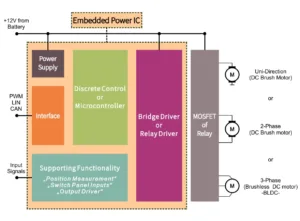
- Firmware can be defined as software code that is stored in non-volatile memory and is responsible for controlling the hardware of electronic devices.
- Unlike traditional software, which can be easily modified or replaced, firmware is designed to be more permanent and typically requires special tools or processes for updating.
- Firmware serves as a bridge between hardware and software, providing the necessary instructions and functionality to enable the device to operate effectively.
- Firmware is distinct from software and hardware. While software refers to the broader term for programs and applications that run on a computer or device, firmware specifically refers to the software code that resides in hardware and controls its behaviour.

- Firmware is intimately tied to the hardware it runs on. It is closely tailored to the specific device and its components, taking into account hardware specifications and constraints.
- There are different types of firmware, each serving a specific purpose. One common type is embedded firmware, which is found in embedded systems and microcontrollers. It controls the operations of devices such as digital cameras, home appliances, and industrial machinery.
- BIOS (Basic Input/Output System) is another type of firmware that is present in most personal computers. It provides the essential functions for booting up the computer, initializing hardware, and facilitating the operating system’s interaction with the hardware components.
- Firmware is often written in low-level programming languages such as C or Assembly. These languages offer direct access to hardware resources and enable efficient control and optimization.
- Firmware development requires a thorough understanding of hardware architecture, including processors, memory, communication interfaces, and other components. This knowledge is vital for effectively programming the firmware to interact with the hardware.
- Firmware programming involves considerations of efficiency, reliability, and real-time responsiveness. Firmware code must be carefully optimized to utilize hardware resources effectively and ensure proper device functionality.
- Firmware updates are periodically released to enhance device performance, fix bugs, introduce new features, or address security vulnerabilities. These updates typically require specialized processes or tools for installation.
Understanding firmware is essential for firmware programmers, hardware engineers, and anyone involved in the development or maintenance of electronic devices. It represents a crucial link between software and hardware, enabling efficient control and functionality. By grasping the distinctions between firmware, software, and hardware, as well as exploring the different types of firmware, you can gain a solid foundation for delving further into the world of firmware programming.
Basics of Firmware Programming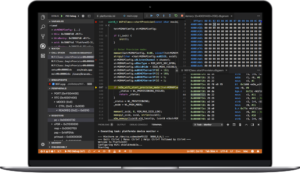
- Firmware programming involves writing software code that controls the hardware of electronic devices and is typically written in low-level programming languages like C and Assembly.
- C is one of the most commonly used programming languages for firmware development. It offers a balance between high-level and low-level programming, providing flexibility, efficiency, and portability.
- Assembly language is another key language used in firmware programming. It allows direct manipulation of the device’s hardware resources, offering fine-grained control and optimization.

- Low-level programming languages like C and Assembly are favoured for firmware programming due to their ability to directly access and manipulate hardware resources such as registers, memory, and input/output (I/O) ports.
- Low-level programming provides precise control over hardware, allowing firmware programmers to optimize performance, manage power consumption, and implement real-time functionality.
- Understanding the hardware architecture is crucial in firmware programming. Firmware developers need to have knowledge of the specific microcontroller or embedded system they are working with, including its instruction set, memory organization, and communication interfaces.
- Low-level programming languages facilitate efficient interaction with hardware components, enabling firmware to perform tasks like reading sensor data, controlling actuators, and managing communication protocols.
- Firmware programming often involves writing code that is memory-efficient and executes quickly, as embedded systems typically have limited resources and real-time constraints.
- Debugging and testing are essential parts of firmware development. Low-level programming languages allow for detailed debugging, stepping through code, and examining the state of registers and memory to identify and fix issues.
- Firmware programming plays a critical role in ensuring the stability, reliability, and performance of electronic devices. Well-written firmware code is essential for optimal device operation and user experience.
- Firmware updates may be released to address bugs, improve functionality, or enhance security. Firmware programmers need to be skilled in updating firmware while ensuring compatibility and integrity.
Mastering the basics of firmware programming, including the use of low-level programming languages, is fundamental for developing robust and efficient firmware for electronic devices. The ability to directly interact with hardware resources and optimize performance sets firmware programming apart from other software development domains. By delving into low-level programming and acquiring a solid understanding of hardware architectures, firmware programmers can unlock the full potential of electronic devices and deliver high-quality firmware solutions.
Development Tools and Environment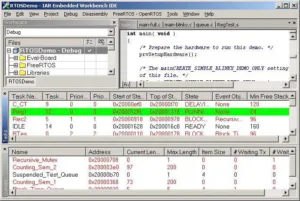
- Firmware programming requires specific tools and software to facilitate the development process and ensure efficient coding and debugging.
- Integrated Development Environments (IDEs) are essential for firmware programming. IDEs provide a comprehensive development environment with features such as code editing, project management, debugging tools, and integration with compilers.
- Commonly used IDEs for firmware programming include:
- Eclipse IDE: A widely used open-source IDE that supports firmware development with its C/C++ Development Tooling (CDT) plugin.
- Keil uVision: A popular IDE specifically designed for embedded systems, providing a user-friendly interface and seamless integration with various microcontroller platforms.
- MPLAB X IDE: A development environment for Microchip microcontrollers, featuring code editor, project management, and debugging capabilities.
- Compilers are essential tools for translating firmware code written in high-level languages like C into machine-readable instructions. Different microcontrollers and platforms may require specific compilers.
 Commonly used compilers for firmware programming include:
Commonly used compilers for firmware programming include:
- GCC (GNU Compiler Collection): A widely used open-source compiler that supports various microcontroller architectures, providing optimized code generation.
- Keil C Compiler: A compiler specifically designed for embedded systems, offering high-performance code generation for microcontrollers from different vendors.
- IAR Embedded Workbench: A commercial compiler toolchain known for its efficient code optimization and support for various microcontroller platforms.
- Dave IDE from Infineon: DAVE is a standalone system with automatic code generation modules. It is suited for the development of software drivers for Infineon microcontrollers and aids the developer with automatically created C-level templates and user-desired functionalities.

- Modus Toolbox from Infineon: Modus Toolbox™ Software is a modern, extensible development environment supporting a wide range of Infineon microcontroller devices, including PSoC™ Arm® Cortex® Microcontrollers, TRAVEO™ T2G Arm® Cortex® Microcontroller, XMC™ Industrial Microcontrollers, AIROC™ Wi-Fi devices, AIROC™ Bluetooth® devices, and USB-C Power Delivery Microcontrollers.
- Debuggers play a crucial role in firmware development by allowing developers to trace code execution, monitor variables, and identify and fix bugs. They provide insights into the firmware’s behaviour at runtime.
- Hardware debuggers, such as JTAG (Joint Test Action Group) and SWD (Serial Wire Debug), facilitate low-level debugging and interaction with the microcontroller’s internal registers and memory.
- In-circuit emulators (ICE) are advanced debuggers that provide real-time debugging capabilities, allowing firmware programmers to halt code execution, examine memory and register contents, and trace program flow.
- Some microcontrollers also offer built-in debug and programming interfaces, eliminating the need for external hardware debuggers.
- Firmware development often involves the use of software simulation tools to test and debug firmware code without the need for physical hardware. These tools simulate the behaviour of the target microcontroller, enabling code verification and validation.
- Development environment setup typically involves installing the necessary IDE, compiler, debugger, and associated software drivers specific to the microcontroller or embedded system being used.
The selection of appropriate development tools and setting up the development environment are crucial steps in firmware programming. The right combination of IDEs, compilers, and debuggers can greatly enhance the productivity and effectiveness of firmware development, leading to efficient coding, debugging, and testing processes. By utilizing these tools effectively, firmware programmers can streamline the development workflow and create high-quality firmware solutions for a variety of electronic devices.
Firmware Development Process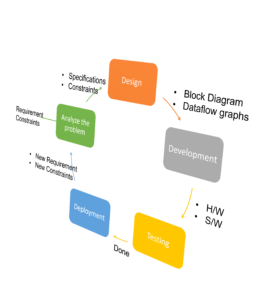
- The firmware development process consists of several stages, starting from requirements gathering and ending with deployment of the firmware onto the target device.
- Requirements gathering is the initial step, where the desired functionality and performance expectations for the firmware are identified and documented. This includes understanding the hardware specifications, user requirements, and any specific constraints or standards that need to be followed.
- Design is a crucial phase where the overall architecture of the firmware is planned. This involves determining the software structure, partitioning functionality into modules, and defining the interfaces between different components.
- Coding is the stage where firmware programmers write the actual code based on the design specifications. Low-level programming languages like C and Assembly are commonly used to directly interact with hardware resources.
- Firmware development requires adherence to coding standards and best practices to ensure code readability, maintainability, and reliability. Consistent naming conventions, proper documentation, and modular code organization are essential for efficient development.
- Testing and verification are critical steps in the firmware development process. Different types of testing, including unit testing, integration testing, and system testing, are performed to validate the firmware’s functionality and detect any defects or bugs.
- Firmware testing may involve creating test cases, executing them on target hardware or simulators, and analyzing the results. Test automation tools and frameworks can help streamline the testing process and ensure thorough coverage.
- Debugging plays a significant role in firmware development. Firmware programmers use debugging tools and techniques to identify and fix issues, trace code execution, monitor variables, and analyze the firmware’s behavior at runtime.
- Continuous integration and version control systems are beneficial for managing firmware development projects. These tools enable collaborative development, automated build processes, and version tracking, ensuring efficient collaboration among team members.
- Following an iterative and incremental development approach can be advantageous in firmware development. Breaking down the firmware into smaller tasks, implementing and testing them in iterations, and incorporating feedback can lead to faster development cycles and improved software quality.
- Firmware documentation is crucial for future reference, maintenance, and troubleshooting. Proper documentation should include architectural diagrams, module-level documentation, APIs, hardware interface details, and release notes.
- Deployment involves transferring the firmware to the target device or production environment. This may include methods like programming the firmware onto microcontrollers, utilizing over-the-air updates, or integrating with manufacturing processes.
Efficient firmware development involves a systematic approach, adherence to best practices, and the use of appropriate tools and methodologies. By following a well-defined process, firmware programmers can ensure the delivery of reliable, high-quality firmware that meets the requirements of the target device and its intended functionality.
Firmware Architecture
- Firmware architecture refers to the overall structure and organization of firmware code, determining how different components and modules interact with each other to achieve the desired functionality.
- Monolithic architecture is a common firmware architecture where all the functionality is contained within a single codebase. All the modules and components are tightly integrated, making it simpler to develop and debug the firmware.
- Advantages of monolithic architecture include:
- Simplicity: The entire firmware is contained in a single codebase, making it easier to understand and maintain.
- Efficient resource utilization: Monolithic firmware can utilize hardware resources more efficiently since it has full control over all components.
- Lower overhead: There is minimal overhead associated with inter-module communication.
- Disadvantages of monolithic architecture include:
- Lack of modularity: Changes to one module can have unintended effects on other modules, making it challenging to modify or extend the firmware.
- Limited scalability: Monolithic firmware can become more complex and difficult to manage as the firmware size and functionality increase.
- Advantages of monolithic architecture include:
- Layered architecture divides the firmware into different layers, each responsible for a specific set of functions or services. Each layer interacts with the layers above and below it, following a hierarchical structure.
- Advantages of layered architecture include:
- Modularity: Layers are independent and can be developed, tested, and maintained separately, allowing for easier modification and extension.
- Abstraction: Each layer provides a well-defined interface to the layers above it, promoting code reuse and encapsulation of functionality.
- Scalability: Additional layers can be added to accommodate new features or functionality without disrupting existing layers.
- Disadvantages of layered architecture include:
- Increased complexity: The layered structure adds additional complexity compared to a monolithic architecture.
- Overhead: Inter-layer communication can introduce overhead and impact performance.
- Advantages of layered architecture include:
- Modular architecture divides the firmware into loosely coupled modules, where each module represents a specific functionality or feature. Modules communicate through well-defined interfaces, enabling independent development and testing.
- Advantages of modular architecture include:
- Reusability: Modules can be developed as standalone components that can be easily reused across different firmware projects.
- Flexibility: Modules can be easily modified or replaced without affecting other parts of the firmware, allowing for flexible firmware development and maintenance.
- Collaboration: Modular architecture promotes collaboration among firmware developers by allowing them to work on different modules concurrently.
- Disadvantages of modular architecture include:
- Increased overhead: Inter-module communication and coordination can introduce some overhead, affecting performance.
- Higher complexity: The presence of multiple modules requires careful management and coordination to ensure proper integration and functionality.
- Advantages of modular architecture include:
The choice of firmware architecture depends on factors such as the complexity of the firmware, development team size, scalability requirements, and the need for modularity. Each architecture type has its own advantages and disadvantages, and firmware developers need to carefully evaluate these factors to select the most appropriate architecture for their specific project.
Device Drivers and Hardware Interaction
- Device drivers play a crucial role in firmware programming by facilitating the interaction between firmware and hardware components. They act as intermediaries, providing an interface for firmware to communicate with and control specific hardware devices.
- Device drivers abstract the hardware complexities, allowing firmware programmers to interact with hardware components through standardized interfaces and APIs. This simplifies the firmware development process and promotes portability across different hardware platforms.
- Device drivers are typically written specifically for a particular hardware device or family of devices. They provide functions and APIs that firmware code can call to perform operations such as reading sensor data, controlling actuators, managing communication protocols, and accessing peripheral interfaces.
- Firmware interacts with sensors, which are hardware components used to measure physical quantities such as temperature, pressure, acceleration, or light. Device drivers provide firmware with the necessary functions to read data from sensors and interpret the measurements.
- Actuators are hardware components that allow firmware to control physical operations, such as motors, valves, or display screens. Device drivers provide firmware with the necessary functions to send commands and signals to actuators, enabling control over their behaviour.
- Communication interfaces, such as UART (Universal Asynchronous Receiver/Transmitter), SPI (Serial Peripheral Interface), I2C (Inter-Integrated Circuit), or Ethernet, allow firmware to exchange data with external devices or systems. Device drivers handle the low-level details of these interfaces, providing firmware with functions to send and receive data through them.
- Firmware programming involves utilizing device drivers to initialize and configure hardware devices during the firmware startup process. This includes setting up communication protocols, configuring registers, and establishing proper operating conditions for the hardware components.
- Device drivers enable firmware to handle interrupts and events generated by hardware devices. Firmware can register interrupt handlers or event callbacks through device drivers, allowing it to respond to hardware events promptly.
- Firmware interacts with device drivers through function calls or by accessing the device driver’s API. These interactions enable firmware to perform operations such as configuring hardware, reading or writing data, and handling events.
- Well-designed device drivers abstract the hardware details, allowing firmware developers to focus on the higher-level functionality and logic of the firmware. They provide a level of abstraction that simplifies the firmware development process and promotes code reusability.
- Device driver development often requires an understanding of the hardware’s datasheet, specifications, and programming interfaces. Firmware developers need to be familiar with the specific device or hardware family they are working with to effectively utilize and interact with device drivers.
Device drivers are vital components in firmware programming, enabling firmware to interact with hardware devices, sensors, actuators, and communication interfaces. They provide a standardized interface and abstraction layer, simplifying the firmware development process and promoting portability. By utilizing device drivers effectively, firmware programmers can focus on the higher-level firmware logic while efficiently interacting with hardware components.
Debugging and Testing Firmware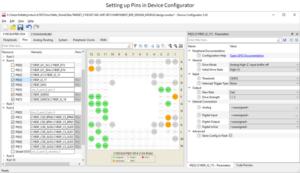
- Debugging is a critical process in firmware development that involves identifying and resolving issues, bugs, and unexpected behaviors in the firmware code. It helps ensure the correctness, reliability, and performance of the firmware.
- Firmware debugging often requires low-level debugging techniques and tools to interact with the microcontroller’s registers, memory, and peripherals. Hardware debuggers, such as JTAG (Joint Test Action Group) or SWD (Serial Wire Debug), enable firmware programmers to halt code execution, set breakpoints, examine memory contents, and trace program flow.
- Software debuggers integrated into the development environment, such as IDEs, provide features like code stepping, variable monitoring, and stack trace analysis. These tools help identify code-level issues and provide insights into the firmware’s behaviour during runtime.
- Debugging techniques such as logging and printf statements can be used to print debugging information and trace the execution flow in firmware code. These techniques are particularly useful when low-level debugging tools are not available or when dealing with specific scenarios that require custom debugging approaches.
- Unit testing is a testing methodology where individual components or modules of the firmware are tested in isolation. It focuses on verifying the correctness and functionality of individual units of code. Unit testing frameworks and tools provide an automated way to create and execute test cases, enabling efficient testing of firmware modules.
- Integration testing is the process of testing how different firmware modules interact and work together as a whole. It ensures that the integration of various components and their interactions function correctly. Integration testing can involve simulating real-world scenarios or connecting the firmware to the actual hardware.
- Hardware-in-the-loop (HIL) testing is a technique that combines firmware testing with real hardware. It involves connecting the firmware being tested to a physical device or a hardware simulation environment to validate the firmware’s behaviour in a real-world context.
- Firmware code coverage analysis helps assess the thoroughness of testing by determining which parts of the code have been executed during testing. Code coverage tools provide metrics and reports on code coverage, helping identify areas of the firmware that need additional testing.
- Regression testing involves rerunning previously executed tests to ensure that changes or fixes in the firmware do not introduce new issues or break existing functionality. It helps maintain the stability and reliability of the firmware throughout the development process.
- Test automation frameworks and tools can be utilized to automate the execution of tests, enabling repetitive and systematic testing of the firmware. Automated tests can be executed in a controlled and reproducible manner, saving time and effort in the testing process.
- Firmware developers can utilize emulators or simulators to simulate the behaviour of the target hardware, enabling testing and debugging without the need for physical devices. These tools provide a controlled environment for testing firmware under various scenarios.
- Continuous integration and continuous testing practices promote frequent testing and early detection of issues in the firmware development cycle. Automated build systems and testing frameworks are used to ensure that firmware changes are continuously tested, resulting in more stable and reliable firmware.
Debugging and testing are crucial steps in firmware development to ensure the functionality, reliability, and performance of the firmware. By employing effective debugging techniques and utilizing appropriate testing methodologies, firmware programmers can identify and resolve issues, validate the firmware’s behaviour, and deliver high-quality firmware solutions.
Firmware Security Considerations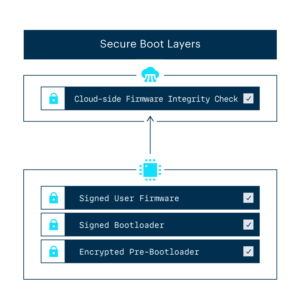
- Firmware security is of paramount importance as it plays a crucial role in protecting electronic devices from unauthorized access, malicious attacks, and data breaches. Securing firmware is essential to ensure the integrity, confidentiality, and availability of the device and its functionality.
- Common security vulnerabilities in firmware include:
- Insecure firmware updates: Lack of secure mechanisms for updating firmware can lead to unauthorized modifications or malicious firmware installations.
- Weak authentication and authorization: Inadequate or poorly implemented authentication and authorization mechanisms can allow unauthorized access to the device or its firmware.
- Insufficient input validation: Lack of proper input validation can lead to buffer overflows, injection attacks, or other forms of code injection vulnerabilities.
- Insecure communication protocols: Using insecure communication protocols or weak encryption can expose sensitive data transmitted between the firmware and external systems.
- Lack of secure boot process: Without a secure boot process, an attacker can tamper with the firmware during the boot-up sequence, compromising the device’s security.
- Best practices for securing firmware include:
- Secure firmware updates: Implement secure mechanisms for firmware updates, including encryption, digital signatures, and secure distribution channels.
- Robust authentication and authorization: Utilize strong authentication methods, such as two-factor authentication, and enforce proper access controls to ensure only authorized users can access and modify the firmware.
- Input validation and sanitization: Implement strict input validation to prevent common security vulnerabilities, such as buffer overflows, injection attacks, or command injection.
- Secure communication protocols: Use secure communication protocols, such as SSL/TLS, and employ strong encryption algorithms to protect data transmitted between the firmware and external systems.
- Secure boot process: Implement a secure boot process that verifies the integrity and authenticity of the firmware during the device startup, preventing unauthorized modifications.
- Code review and vulnerability scanning: Perform regular code reviews and utilize automated vulnerability scanning tools to identify and fix security issues in the firmware codebase.
- Principle of least privilege: Enforce the principle of least privilege, ensuring that firmware and associated components have only the necessary privileges to perform their designated tasks.
- Secure storage and encryption: Safeguard sensitive data stored in the firmware or on the device by utilizing encryption techniques and secure storage mechanisms.
- Firmware security should be an ongoing effort throughout the entire firmware development lifecycle. Security considerations should be incorporated from the design phase to the testing, deployment, and ongoing maintenance of the firmware.
- Compliance with industry security standards, such as the Common Criteria for Information Technology Security Evaluation (ISO/IEC 15408), can provide a framework for ensuring a high level of security in firmware development.
- Regular security updates and patches should be provided to address any identified security vulnerabilities in the firmware. This helps mitigate potential risks and ensures the firmware remains secure against emerging threats.
- Collaboration with the security community and participation in bug bounty programs can help identify and address security vulnerabilities in the firmware, ensuring a proactive and robust security posture.
Securing firmware is essential to protect electronic devices from various security threats and safeguard user data. By following best practices, incorporating security measures throughout the firmware development process, and staying updated on emerging security threats, firmware developers can significantly enhance the security of their devices and mitigate potential risks.
Case Studies and Examples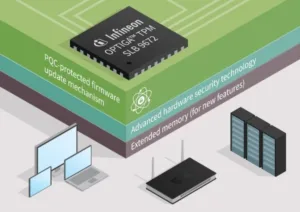
- Embedded Systems: Firmware programming is widely used in embedded systems, which are dedicated computing systems designed for specific tasks. For example:
- In automotive applications, firmware controls the engine management system, anti-lock braking system (ABS), airbag deployment, and other critical functions.
- In consumer electronics, firmware powers devices like smartphones, smart TVs, and home automation systems, enabling their functionality and user interaction.
- Industrial control systems rely on firmware to control machinery, automation processes, and monitor sensors for efficient operation.
- Internet of Things (IoT) Devices: Firmware plays a crucial role in IoT devices that connect and communicate with each other and the internet. Examples include:
- Smart thermostats that regulate temperature in homes and buildings based on user preferences, controlled by firmware.
- Wearable devices like fitness trackers or smartwatches that collect and analyze health data, all driven by firmware.
- Connected home security systems that monitor and control security devices, such as cameras, sensors, and locks, using firmware.
- Medical Devices: Firmware programming is vital in medical devices for accurate measurements, precise control, and patient safety. Examples include:
- Pacemakers and implantable cardiac devices rely on firmware to regulate heart rhythms and deliver appropriate therapy.
- Imaging equipment like MRI scanners and ultrasound machines utilize firmware to control image acquisition, processing, and data transmission.
- Infusion pumps and insulin delivery systems depend on firmware to administer medication at precise doses and timings.
- Network Devices: Firmware is essential in network devices to manage data transmission, routing, and security. Examples include:
- Routers and switches that handle network traffic routing and management utilize firmware for configuration, routing protocols, and security features.
- Network security appliances, such as firewalls and intrusion detection systems, rely on firmware for packet inspection, threat detection, and response.
- Aerospace and Defense Systems: Firmware programming is critical in aerospace and defense industries for controlling complex systems and ensuring safety. Examples include:
- Avionics systems in aircraft use firmware to manage flight control, navigation, and communication systems.
- Unmanned aerial vehicles (UAVs) and drones rely on firmware to control flight operations, stability, and payload delivery.
- Military equipment, such as radar systems, missile guidance systems, and encrypted communication devices, utilize firmware for accurate and secure operation.
- Gaming Consoles: Firmware programming is integral to gaming consoles, enabling game execution, graphics rendering, and user interaction. Examples include:
- Game consoles like PlayStation, Xbox, and Nintendo Switch rely on firmware to manage game loading, audio/video processing, and user interface functionality.
- Handheld gaming devices and portable gaming consoles use firmware to drive game execution, input controls, and display rendering.
- Smart Appliances and IoT Devices: Firmware powers various smart appliances and IoT devices, enhancing functionality and connectivity. Examples include:
- Smart refrigerators that monitor and adjust temperature, manage inventory, and provide remote access to users via firmware.
- Home automation systems that control lighting, HVAC systems, and security devices through firmware programming.
These case studies and examples highlight the diverse applications of firmware programming across different industries and devices. Firmware plays a crucial role in enabling functionality, control, and connectivity in various domains, contributing to enhanced user experiences and improved efficiency in numerous applications.
Future Trends and Conclusion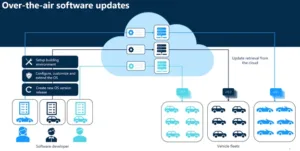
- Internet of Things (IoT) Expansion: The proliferation of IoT devices is expected to continue, leading to increased demand for firmware programming. IoT devices require firmware to enable connectivity, manage data transmission, and ensure secure and reliable operation.
- Firmware Over-the-Air (FOTA) Updates: FOTA updates allow firmware to be remotely updated and patched, providing a convenient and efficient way to deliver bug fixes, security patches, and feature enhancements. FOTA updates reduce the need for manual firmware updates and enable devices to stay up to date with the latest firmware versions.
- Increased Security Focus: With the rise in cyber threats and attacks, firmware security will continue to be a significant concern. Future firmware programming will focus on implementing robust security measures, such as secure boot processes, encryption, authentication, and secure communication protocols, to protect devices and data.
- Machine Learning and Artificial Intelligence: Firmware programming can leverage machine learning (ML) and artificial intelligence (AI) techniques to enhance device performance and enable intelligent decision-making. ML and AI algorithms can be implemented in firmware to optimize power consumption, improve data processing, and enable predictive analytics.
- Edge Computing and Real-Time Processing: Edge computing, where data processing occurs closer to the data source rather than in the cloud, is gaining prominence. Firmware programming will play a crucial role in enabling real-time processing, data analytics, and decision-making at the edge, leading to faster response times and reduced reliance on cloud connectivity.
- Agile Development and DevOps Practices: Firmware development will increasingly adopt agile methodologies and DevOps practices to enhance collaboration, streamline development cycles, and ensure continuous integration and deployment. These practices facilitate faster firmware updates, improved quality control, and efficient collaboration between firmware developers and other stakeholders.
- Conclusion: Firmware programming is a vital discipline in the world of electronics, enabling the control, functionality, and connectivity of various devices. As technology continues to evolve, firmware programming will be at the forefront of innovation, enabling the development of advanced features, improved performance, and enhanced security in electronic devices.
In conclusion, firmware programming is a dynamic field that encompasses various industries and applications. Understanding the fundamentals of firmware programming, development tools, testing methodologies, and security considerations is essential for creating robust and reliable firmware solutions. As technology advances, firmware programming will continue to evolve, addressing emerging trends and challenges to meet the demands of the ever-changing landscape of electronic devices.